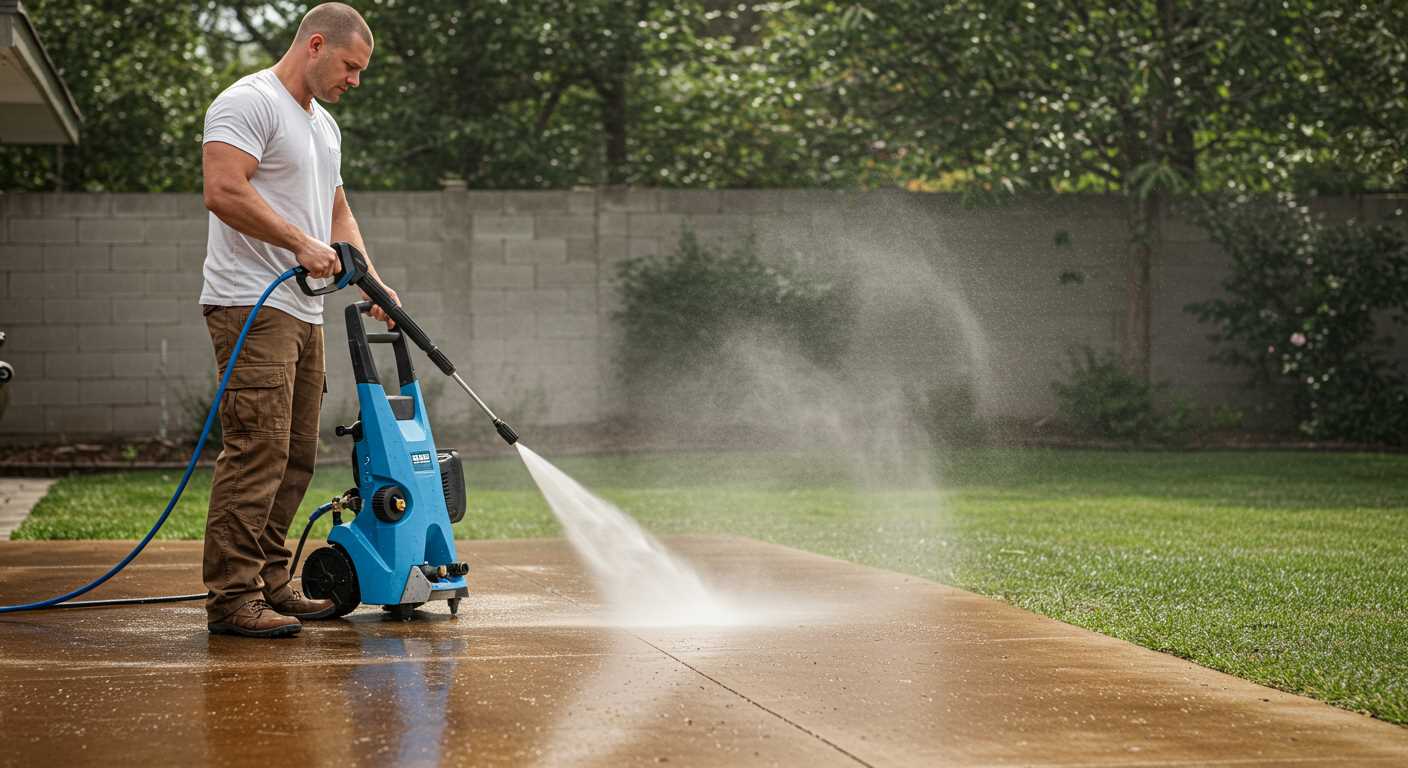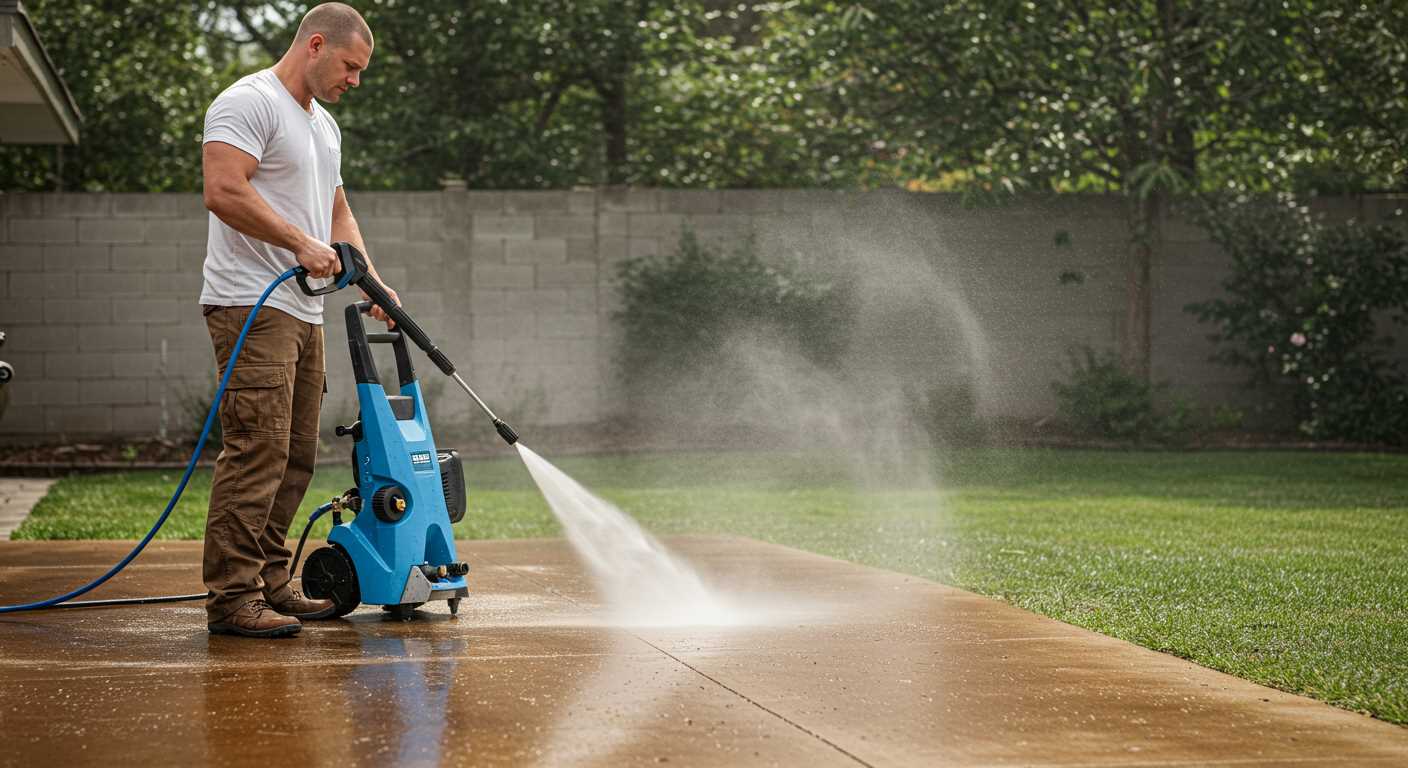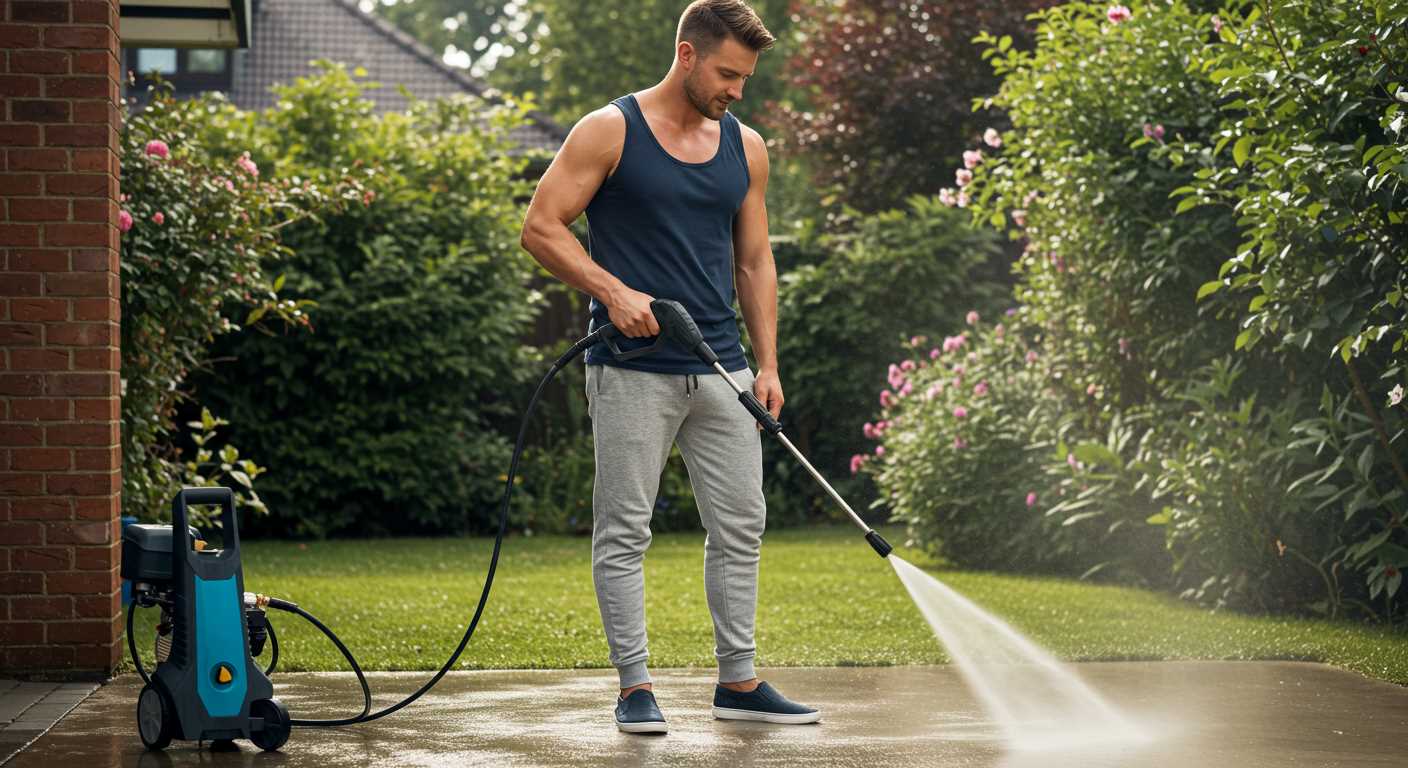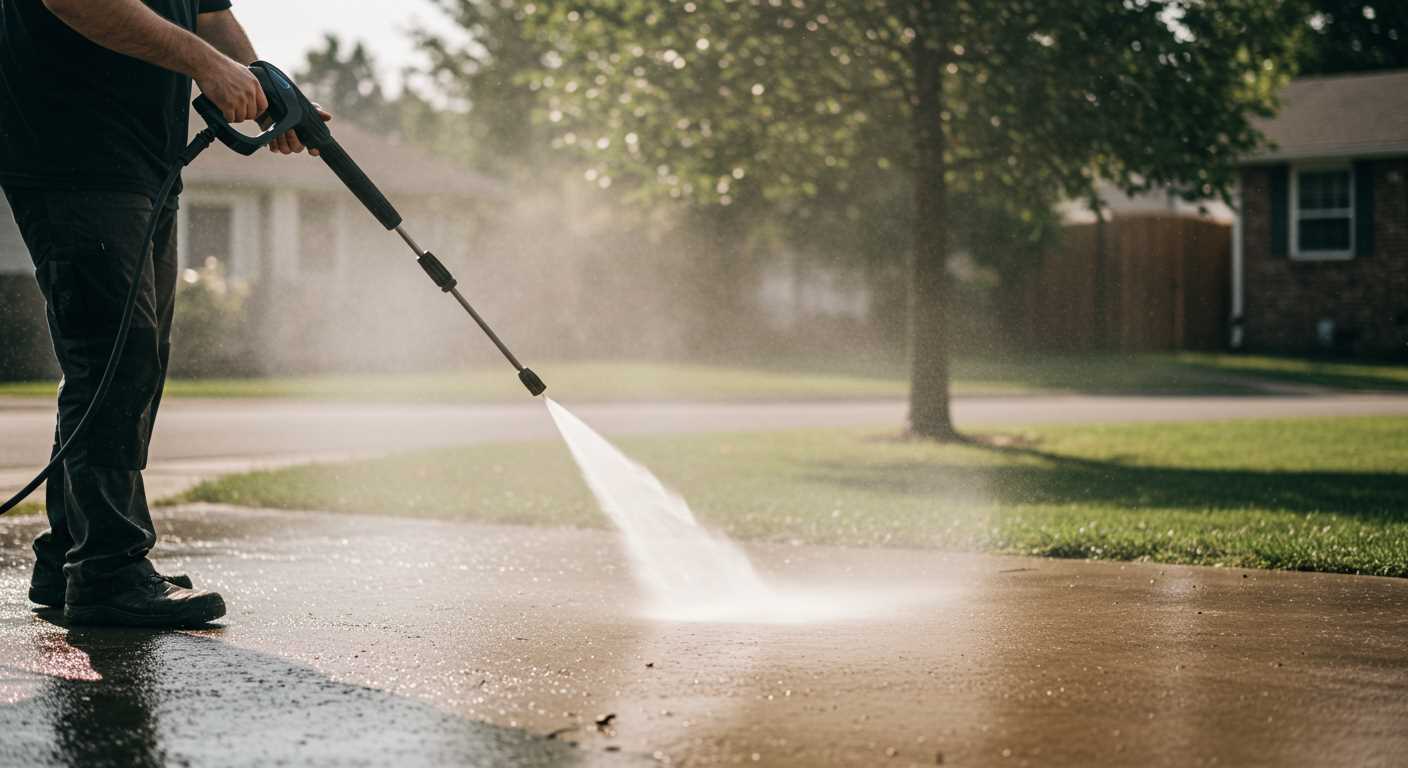




Begin by selecting the right nozzle for your task. A 25-degree nozzle works wonders on most surfaces, delivering a balance between power and control. I remember my first time using a narrow nozzle; it was a bit overwhelming, and I ended up with streaks on the surface. After that, I always opted for the 25-degree option for broader areas, reserving the narrower choices for tight spots.
Preparation is key. Clear the area of furniture, potted plants, and any loose debris. I once underestimated this step and ended up moving a heavy table mid-clean, which disrupted my rhythm. Take a few minutes to properly set the stage, and the results will speak for themselves.
Before you engage the equipment, ensure you test a small, inconspicuous section. Every surface reacts differently; I learned this the hard way with a delicate stone that lost its sheen after an aggressive clean. A gentle touch goes a long way in preserving the integrity of your outdoor flooring.
As you work, maintain a consistent distance of around 12 to 18 inches from the surface. This distance prevents damage and ensures an even flow of water. I recall a time when I got too close and chipped a few tiles; it took a lot of effort to fix that mistake. Keeping a steady hand and proper distance makes all the difference.
Finish by rinsing the area thoroughly to remove any remaining detergent or debris. It’s surprising how easily residues can cling to surfaces, and a final rinse is essential for a polished look. Following these steps will elevate your outdoor area, making it a welcoming space for relaxation and enjoyment.
Effective Techniques for Revitalising Outdoor Surfaces
Utilising a high-pressure device can dramatically enhance the appearance of outdoor surfaces. Begin by removing any large debris, such as leaves or branches, to ensure a clear area. This step avoids any obstruction that could hinder the washing process. Once the area is prepared, applying a suitable cleaning solution can make a significant difference. For those with Ryobi equipment, consider using the soap for ryobi pressure washer to maximise cleaning potential.
Optimal Settings and Techniques
Select the appropriate nozzle for the specific surface. A wider spray angle can be ideal for larger areas, while a more focused stream is better for stubborn stains. Maintain a consistent distance, usually around 12-18 inches, to avoid damage while ensuring effective dirt removal. Move systematically, overlapping each pass slightly to ensure thorough treatment. Pay attention to corners and edges, as these areas often accumulate grime. A second pass may be necessary for particularly stubborn spots.
Post-Cleaning Care
<pOnce finished, rinsing the surface thoroughly is crucial. This step ensures that no cleaning solution residue remains, which could lead to slippery conditions. Allow the area to dry completely before placing any furniture back to prevent mildew. Regular maintenance can prolong the pristine condition of your outdoor space, making future cleanings easier and more efficient.
Choosing the Right Pressure Washer for Patio Cleaning
For optimal results, select a unit with a minimum pressure rating of 1500 PSI. This level is usually sufficient for removing debris without damaging surfaces. In my experience, a model with adjustable pressure settings allows flexibility; you can dial it down for delicate materials and ramp it up for tougher stains.
Types of Pressure Washers
Electric models are quieter and easier to maintain, making them suitable for residential use. However, gas-powered units deliver higher power and are ideal for larger areas or more challenging tasks. I recall using a gas model on a particularly grimy patio, and the difference in performance was striking. It blasted through years of dirt in no time.
Accessories Matter
Investing in the right nozzles can significantly enhance your cleaning experience. A 25-degree nozzle typically works well for most surfaces, while a rotating nozzle can tackle stubborn grime effectively. I once underestimated the impact of the right attachment and found myself scrubbing stubborn spots manually. Trust me, having the correct tools makes all the difference. Don’t forget to check for compatibility with your selected machine.
If you’d like to maintain the shine on other items around your home, consider checking out this how to clean leather shoes a step by step guide for more helpful tips.
Preparing Your Outdoor Surface for High-Pressure Cleaning
Before launching into the task of revitalising your outdoor space, take a few crucial steps to ensure optimal results. Start by removing all furniture, planters, and decorations. This clears the area and prevents any damage to your belongings during the process.
Checking for Damage
Inspect the surface for cracks, loose tiles, or damaged pavers. Addressing these issues before proceeding can prevent further deterioration. Fill any gaps or holes with appropriate fillers to create a smooth surface for the cleaning equipment.
Clearing Debris
- Remove leaves, dirt, and any organic matter using a broom or blower.
- Pay attention to corners and edges, as debris often accumulates in these areas.
- If there are any stubborn stains, consider pre-treating them with a suitable cleaning solution.
Gather all necessary equipment, including safety gear such as goggles and gloves. This preparation ensures a safe and efficient cleaning process. A little effort upfront can lead to a noticeably better outcome, making your outdoor area look brand new.
Selecting the Appropriate Nozzle for Different Surfaces
Choosing the right nozzle is critical for achieving optimal results. Each surface requires a specific nozzle type to avoid damage and ensure thoroughness. I recommend using a fan spray nozzle for larger areas and a more concentrated nozzle for stubborn stains.
Types of Nozzles
Understanding the different nozzle types can enhance your cleaning experience. Here’s a breakdown of common nozzles:
| Nozzle Type | Angle | Recommended Use |
|---|---|---|
| 0° Red | 0° | For tough stains on hard surfaces; requires caution to prevent damage. |
| 15° Yellow | 15° | Effective for stripping paint or cleaning concrete; good for heavy-duty tasks. |
| 25° Green | 25° | Ideal for general cleaning on brick, stone, and concrete. |
| 40° White | 40° | Perfect for softer surfaces like wood and patio furniture. |
| Soap Nozzle | — | Used for applying cleaning solutions; typically has a wider spray. |
Surface Considerations
When cleaning various surfaces, I’ve learned that matching the nozzle to the material is essential. For instance, a 25° nozzle works wonders on concrete but can damage wooden decks if not used at the right distance. Always test a small area first to gauge the effect.
In my experience, using the wrong nozzle can lead to more work in the long run. A 0° nozzle might seem effective, but it can leave marks or etchings on softer materials. Always prioritise safety and surface integrity.
Techniques for Pressure Washing Various Patio Materials
For concrete surfaces, I recommend starting at a 25-degree nozzle. This provides a good balance between power and control. Maintain a distance of around 12 inches from the surface to avoid any damage. A sweeping motion works best; it ensures even coverage without leaving streaks. After the initial pass, if stubborn stains persist, you can move closer or switch to a 15-degree nozzle.
When dealing with wooden decks, I always advise using a 40-degree nozzle. This gentler approach protects the wood from splintering. Keep the nozzle at least 18 inches away and work in the direction of the grain. A consistent, steady motion prevents water from pooling, which can lead to warping.
For brick and stone patios, I’ve found that a 25-degree nozzle is again effective. However, it’s crucial to angle the spray properly to prevent water from seeping into the joints. I recommend maintaining a distance of 12 to 18 inches while cleaning. If you encounter moss or lichen, a pre-treatment with a suitable cleaner before pressure washing can yield better results.
In the case of composite decking, I suggest a 40-degree nozzle as well. This material can be sensitive to high pressure, so keeping a distance of at least 12 inches is key. Always test a small, inconspicuous area first to make sure the surface holds up to the cleaning process.
For tiles, particularly ceramic or porcelain, a 25-degree nozzle works wonders. Keep the nozzle about 12 inches away and avoid using too much pressure on the grout lines to prevent damage. If you encounter heavy staining, using a dedicated tile cleaner beforehand can enhance the outcome.
Lastly, for any patio furniture, I prefer using a 40-degree nozzle. This reduces the risk of damaging finishes while still removing dirt effectively. Maintain a distance of about 18 inches and avoid prolonged spraying in one spot to prevent water from collecting.
Post-Cleaning Care and Maintenance for Your Patio
After that thorough wash, it’s time to think about upkeep. I always recommend allowing the surface to dry completely before any further treatment. This prevents moisture from getting trapped, which could lead to mould or mildew. If you’ve used any cleaning agents, ensure they are rinsed off fully; residual chemicals can degrade materials over time.
Once dry, inspect for any damage. Cracks or loose stones should be addressed promptly to prevent further deterioration. A simple sealant can provide added protection against the elements. I’ve seen many patios suffer from neglect, where minor issues snowball into major repairs.
Regular sweeping is vital. Debris, leaves, and dirt can accumulate quickly, leading to stains or growth of unwanted plants. A quick sweep every week or two keeps things tidy. After sweeping, consider a monthly rinse with a hose to remove any dust or pollen that has settled.
If your outdoor area is surrounded by trees, think about investing in a cover or tarp for the off-season. This protects against falling leaves and sap, which can be a nightmare to clean off later. I learned this the hard way after spending a weekend scrubbing stubborn stains off my own space.
Lastly, consider seasonal maintenance. Every spring and autumn, I dedicate some time to give the area a good once-over. This includes checking joints, reapplying sealants, and ensuring drainage systems are clear. A little attention goes a long way in maintaining that fresh, inviting look.
Safety Tips to Keep in Mind While Using a Pressure Washer
Always wear protective eyewear. High-pressure streams can send debris flying, which may cause serious eye injuries. Invest in a quality pair of safety goggles to keep your vision intact.
Use non-slip footwear. Wet surfaces can be treacherous. Opt for shoes with good grip to prevent slips, especially on tiled or stone surfaces.
Protecting Skin and Clothing
Long sleeves and trousers are a must. This not only protects your skin from potential injury caused by the water jet but also shields against any cleaning chemicals you may use. Avoid loose clothing that could get caught in the equipment.
Setting Up Your Equipment Safely
- Check for any damage before starting. Inspect hoses and connections for leaks or wear.
- Keep a safe distance from electrical outlets and power lines. Water and electricity don’t mix.
- Always point the nozzle away from yourself and others. Aiming the spray in the wrong direction can lead to accidents.
Ensure children and pets are at a safe distance. It’s easy to get absorbed in the task and forget about their safety. Establish a no-go zone while operating the machine.
Use the correct nozzle for the job. Each nozzle has a specific purpose and using the wrong one can increase the risk of damage or injury. Always refer to the manufacturer’s guidelines.
Keep your workspace organised. Remove any obstacles or tripping hazards before starting. A clear area will help you focus on the task at hand.
Finally, never override safety features. If the machine has a safety lock, use it. These features are there for a reason and ignoring them can lead to avoidable accidents.
FAQ:
How do I prepare my patio for cleaning with a pressure washer?
Before using a pressure washer, it’s important to clear the patio of any furniture, plants, and decorative items. Sweep the surface to remove loose dirt and debris. Check for any cracks or damage to the patio that might need attention before cleaning. Cover nearby plants and sensitive areas with tarps to protect them from the pressure and cleaning solution that may be used.
What type of pressure washer should I use for cleaning a patio?
For patio cleaning, a pressure washer with a PSI (pounds per square inch) rating between 2000 and 3000 is typically suitable. Electric pressure washers are quieter and easier to use, while gas-powered models provide more power for heavy-duty cleaning tasks. Ensure that the washer has a suitable nozzle for surface cleaning, such as a wide-angle spray or a rotary nozzle for tougher stains.
Are there any cleaning solutions I should use with the pressure washer?
Using a cleaning solution can enhance the cleaning process, especially for stubborn stains like mould or algae. Look for a patio cleaner or a biodegradable detergent that is safe for outdoor use. Always follow the manufacturer’s instructions for dilution and application. Some pressure washers come with a detergent tank, making it easier to apply the cleaning solution while washing.
How do I safely operate a pressure washer while cleaning my patio?
To operate a pressure washer safely, wear protective gear such as goggles, gloves, and sturdy footwear. Always stand at least two feet away from the surface to avoid damaging it with the high-pressure spray. Start with a lower pressure setting and gradually increase it if necessary. Keep the nozzle moving to prevent concentrating the pressure on any one spot, which could cause damage. Be cautious around electrical outlets and avoid spraying directly at them.
What should I do after cleaning my patio with a pressure washer?
After cleaning, allow the patio to dry completely before replacing any furniture or decorative items. Inspect the surface for any remaining stains or areas that may need a second cleaning. If necessary, consider applying a sealant to protect the surface from future stains and wear. Regular maintenance, such as sweeping and occasional pressure washing, will help keep your patio looking its best.
What materials do I need to clean my patio with a pressure washer?
To clean your patio with a pressure washer, you will need a few key items. Firstly, a pressure washer itself is necessary; choose one with adjustable pressure settings for different surfaces. You may also require a detergent specifically designed for outdoor cleaning, as this helps to remove stubborn stains and grime. A surface cleaner attachment can make the job quicker and more efficient, especially for larger areas. Additionally, wear protective gear such as goggles and gloves to keep yourself safe from debris and cleaning solutions. Finally, a broom or a leaf blower can be handy for clearing loose dirt and leaves before you start washing.
How do I prepare my patio for pressure washing?
Preparing your patio for pressure washing involves several steps to ensure a thorough and safe cleaning process. Begin by removing all furniture, plants, and decorations from the patio area. This not only protects your belongings but also gives you full access to the surface. Next, use a broom or leaf blower to clear away loose dirt, leaves, and debris. If there are any large stains or mould spots, consider pre-treating these areas with a suitable cleaner and letting it sit for a few minutes. Make sure to check for any cracks or loose tiles, as these could be damaged during the pressure washing process. Finally, ensure that surrounding windows and doors are closed to prevent water from entering your home during the cleaning.




.jpg)


